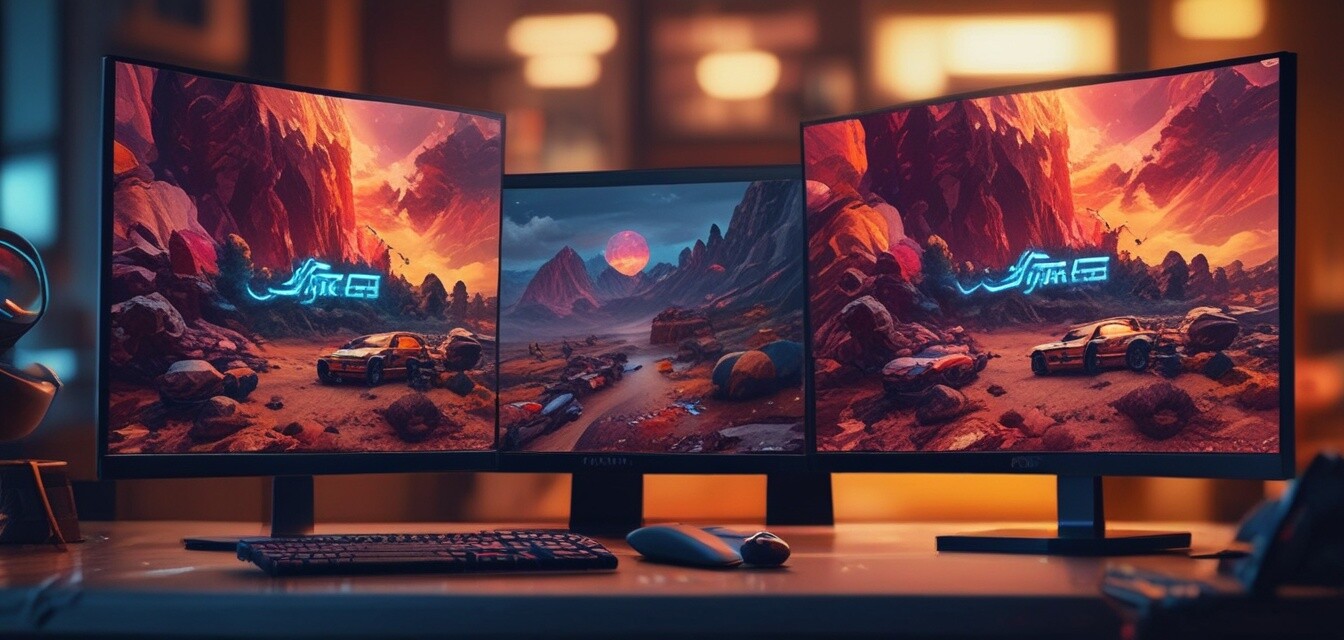
Comparing 4K and 1080p OLED Monitors for Gaming: Pros and Cons
Key Takeaways
- 4K OLED monitors offer superior resolution and visual clarity.
- 1080p OLED monitors provide excellent performance at a more budget-friendly price.
- The choice between 4K and 1080p depends on gaming preferences and hardware capabilities.
- Consider factors like refresh rates, response times, and overall performance before making a decision.
As gaming evolves, so do the technologies that enhance our experiences. The debate between 4K and 1080p OLED monitors for gaming is one that many enthusiasts often ponder. In this article, we'll delve into a detailed comparison, highlighting the pros and cons of each resolution.
Understanding the differences
Before we dive into the specifics, let’s clarify what we're comparing:
- 4K OLED Monitors: These monitors have a resolution of 3840 x 2160 pixels, providing unparalleled detail and clarity.
- 1080p OLED Monitors: With a resolution of 1920 x 1080 pixels, these monitors deliver good performance and visuals for most gaming tasks.
Advantages of 4K OLED Monitors
Pros
- Exceptional visual quality with stunning detail and depth.
- Better color accuracy and contrast for immersive gameplay.
- Ideal for larger screens, making them suitable for home theater setups.
- Future-proof technology as more games evolve to support higher resolutions.
Cons
- Higher price point compared to 1080p monitors.
- Requires more powerful hardware to achieve higher frame rates.
- Can experience input lag or lower refresh rates if not optimized.
Advantages of 1080p OLED Monitors
Pros
- More budget-friendly, making them accessible for a wider range of gamers.
- Requires less powerful hardware to run games effectively.
- Higher refresh rates available, offering smoother gameplay.
- Less demanding on performance, resulting in optimized frame rates.
Cons
- Lower resolution may not provide the same level of detail as 4K.
- Less vibrant colors and contrast compared to 4K OLED monitors.
- May not be suitable for larger screens as pixelation can become apparent.
Comparison table: 4K vs. 1080p OLED Monitors
| Feature | 4K OLED Monitors | 1080p OLED Monitors |
|---|---|---|
| Resolution | 3840 x 2160 pixels | 1920 x 1080 pixels |
| Price Range | Higher | Lower |
| Required Hardware | High-end | Mid-range |
| Color Accuracy | Exceptional | Good |
| Refresh Rates | Varies (often lower) | Higher frequency options available |
Which one should you choose?
Ultimately, your choice between a 4K and a 1080p OLED monitor depends on several factors, including:
- Gaming Preferences: If you seek the best visual experience and your setup can handle it, 4K is the way to go.
- Performance Requirements: If you're focused on competitive gaming where frame rates matter, 1080p might suit you better.
- Budget Constraints: If you're working with a limited budget, a 1080p monitor offers great value without sacrificing too much quality.
- Setup Size: Consider the size of your gaming area; larger screens benefit more from higher resolutions.
Final thoughts
Whether you opt for a 4K OLED monitor or a 1080p OLED monitor, make sure to weigh your options based on your specific gaming needs.
For more insights on gaming tech, check our Buying Guides or dive into News and Trends to keep up with the latest advancements. You can also see how different monitors compare in our Product Comparisons category.